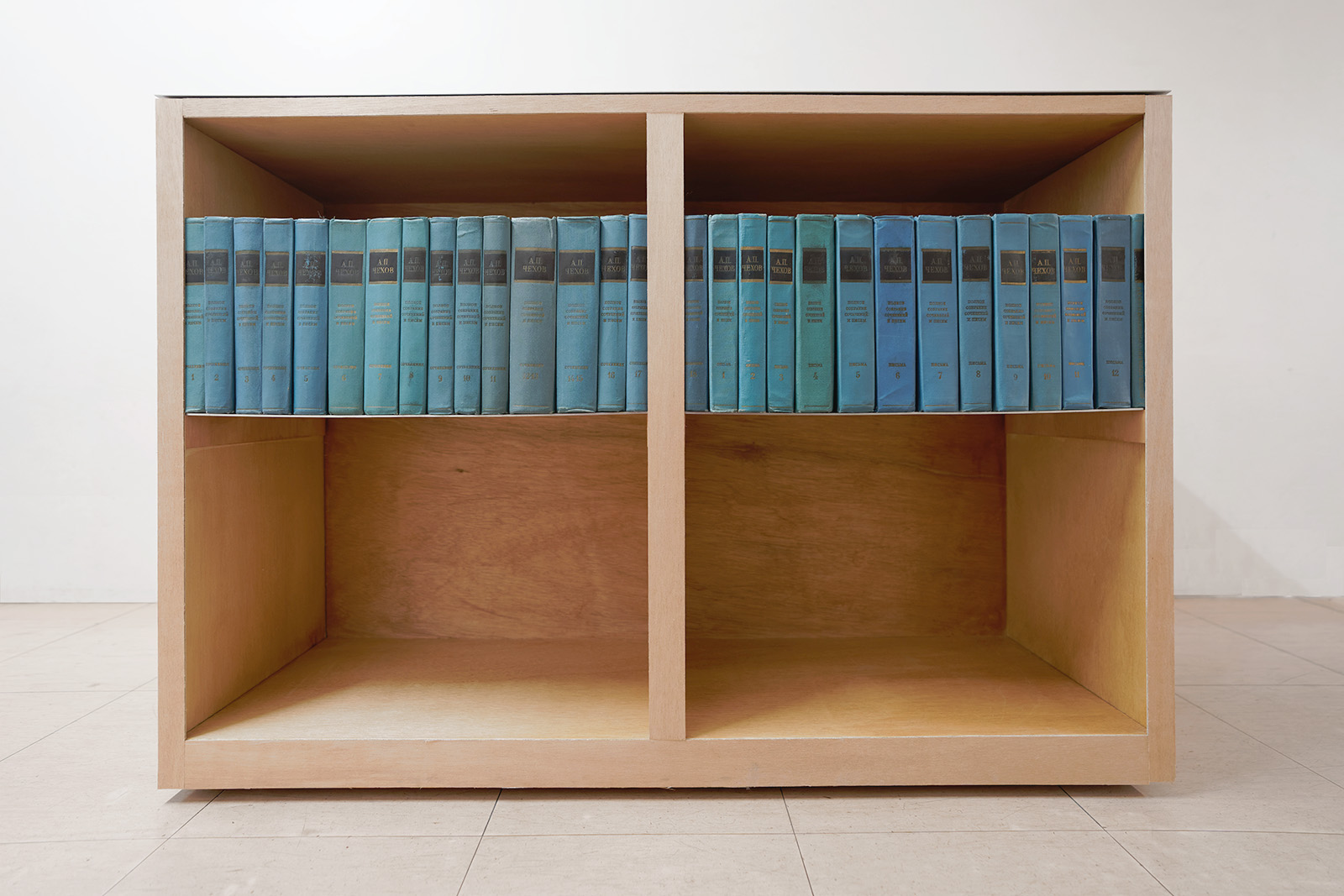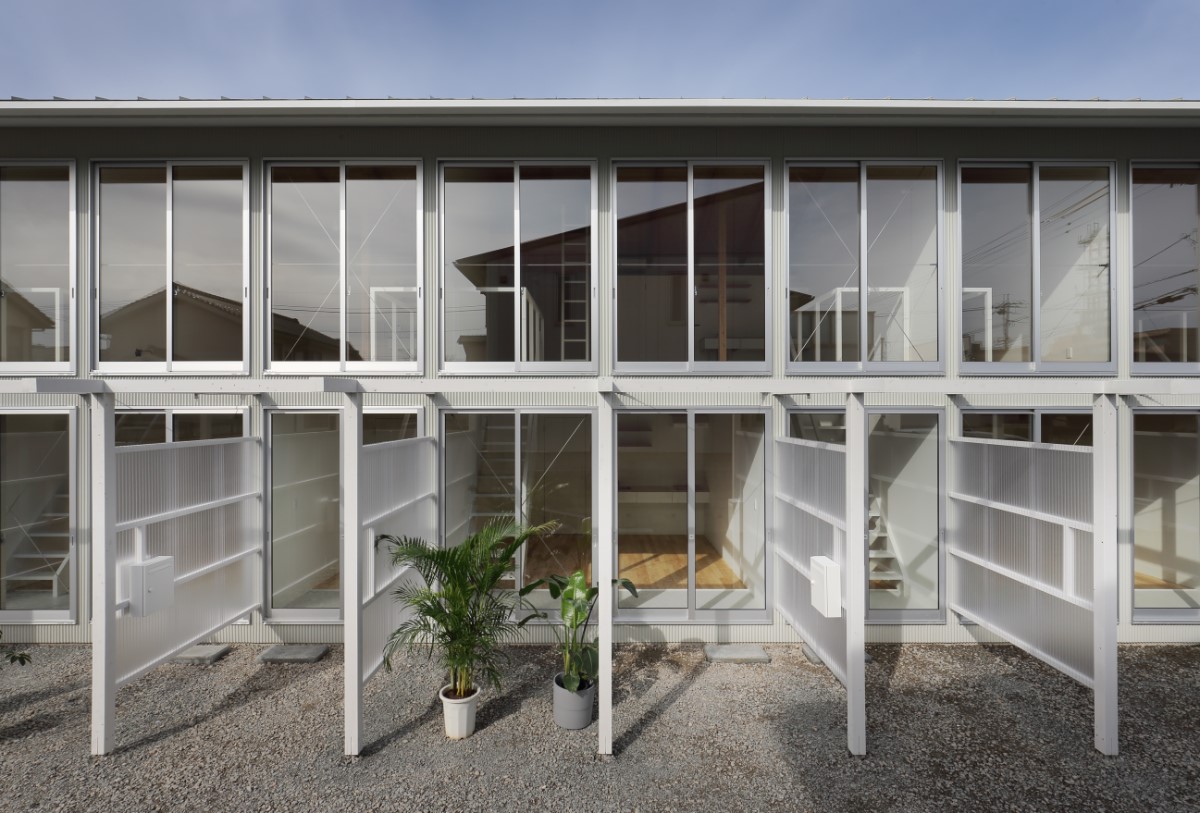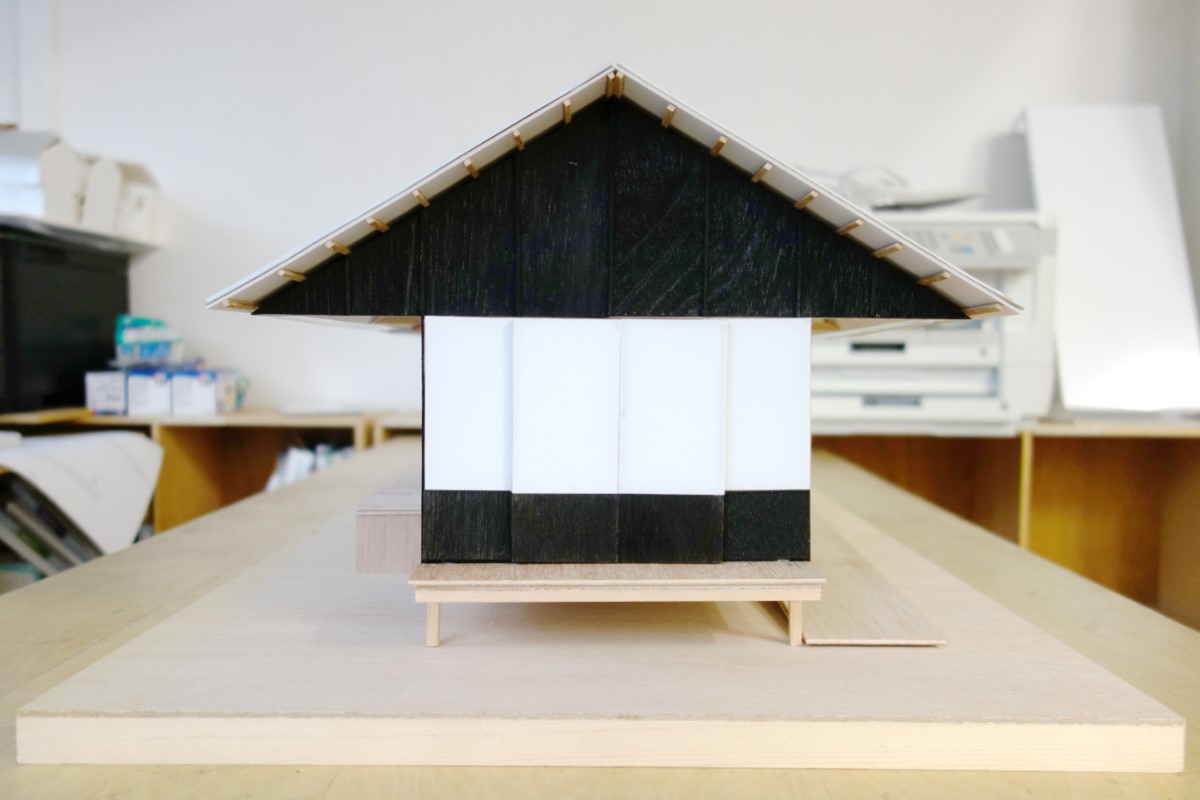
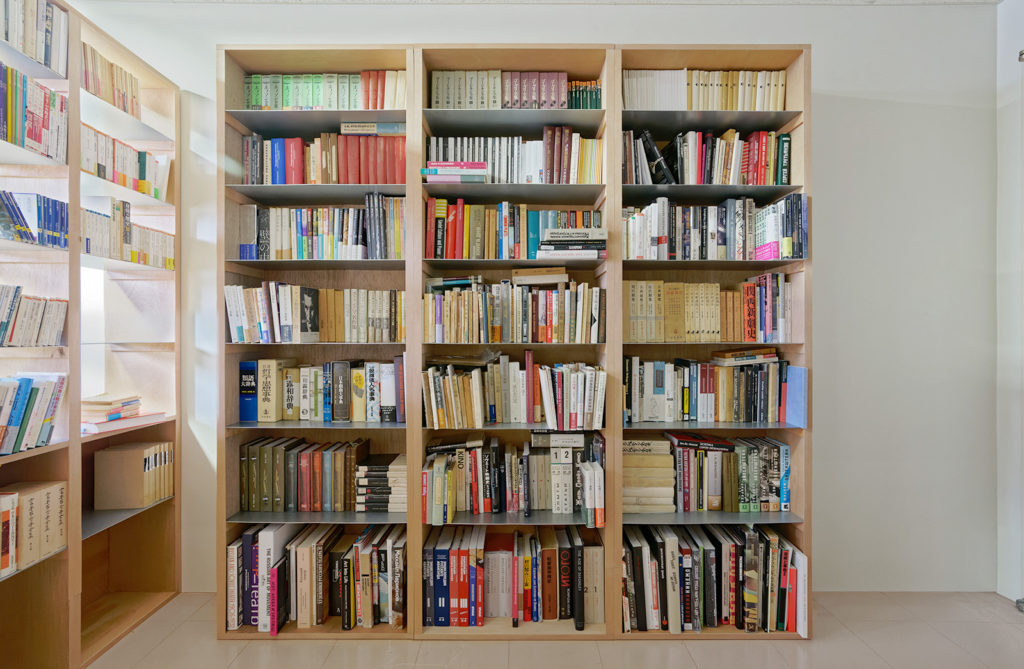


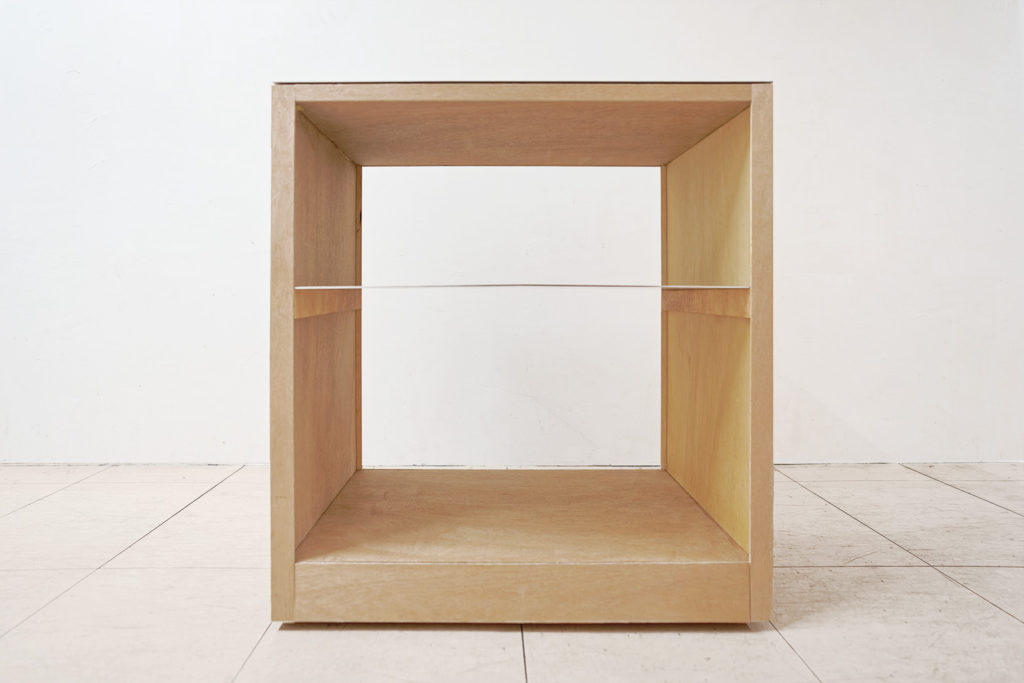
研究者のための書棚とワゴンのデザイン。
多くの蔵書を収めるための書棚、テーブルとしても使うことのできる大きなワゴン、こまごまとしたものを置いておくための小さなワゴンが求められた。
だれの家にでもある書棚、ワゴン、そうした日常の室内風景を構成する、物の形、素材のありよう、それらをあらためて考えようと思った。
–
この書棚とワゴンの棚板は厚さ2mmほどの鋼板で作られている。
薄い鋼板で作られた棚板は、中央部には視認できないほどのわずかな折り目をつけ、本を載せるのには支障がない、ゆるやかな山型の形状としている。棚板に本が載せられることで下方にたわみ、本で埋められると棚板は限りなく水平に近づくようデザインされている。
ささやかな形の変化が、棚板の強度を増し、さらには本を載せることで生じる下方向へのたわみとつりあう。本が取り除かれれば、またもとの形へと戻っていく。
それは公園に置かれたシーソーと子供のように、物とそこにのるものが相互に関係を持つことによって作られる様子にも似ている。
–
条件(ここではモノと重さ)を細やかに把握し、形、素材、厚みをデザインすることで日常の室内風景の中に、かすかな違和感をもった風景を埋め込んだ。
–
Location : Japan
Principle use : Faculty Office
Category : Furniture
Client : Private
Material : Lauan block board , Steel
–
The shelves of the bookcase and wagon are made of steel plates approximately 2 mm thick.
The shelves, made of thin steel plates, have a slight, unobtrusive fold in the center, creating a gentle mountainous shape that does not interfere with placing books.
The shelves are designed to flex downward when books are placed on them, and when full of books, the shelves are designed to be as close to horizontal as possible.
This small change in shape adds strength to the shelf and balances the downward deflection that occurs when books are placed on it. Once the book is removed, the shelf returns to its original shape. This scenery is created by the relationship between objects, like a seesaw or a child in a park.
